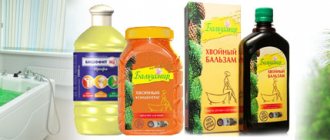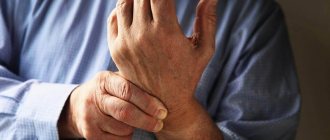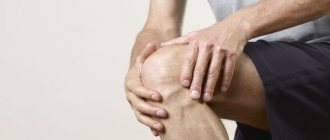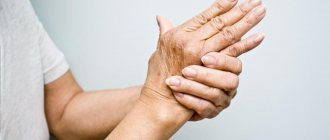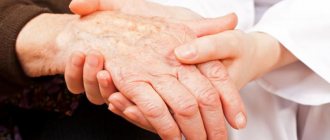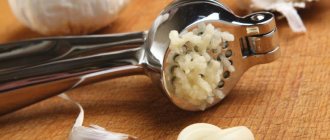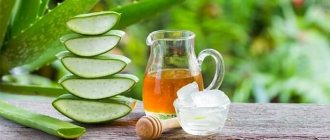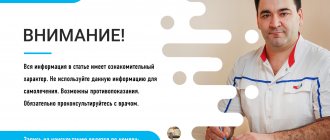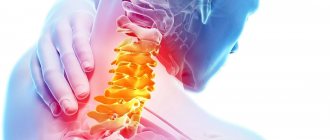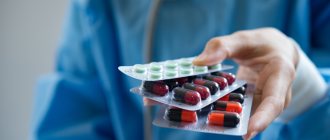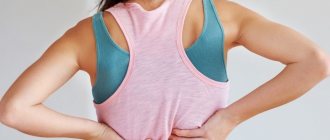In the language of medical specialists around the world, ankylosing spondylitis has different names: ankylosing spondylitis (AS), Strumpell-Bekhterev-Marie disease. All of these concepts indicate a general pathology: inflammation of the intervertebral joints with a subsequent decrease in their mobility - ankylosis. This complication is caused by fusion of the articular ends due to their increase in size as the inflammatory process progresses. The fusion of the vertebrae locks the spinal column into a rigid bony sheath, making it immobile. The disease causes the patient to assume the classic bowed position (the so-called “begging pose”) and causes pain when trying to change the position of the body.
Statistics and etiology of the disease
The first mentions of cases of ankylosing spondylitis are found in medical records of the European Middle Ages. Doctors of that time were quite surprised to discover skeletons with characteristic ossification of the spine, the individual elements of which formed a strong “bone” column. In the mid-19th century, the disease became the subject of general medical study, as evidenced by surviving records of patient complaints and examinations of deceased people. The works of the Russian doctor Vladimir Bekhterev, the German Adolf Strumpel and the Frenchman Pierre Marie are accepted as the basis of etiology and are currently being studied in medical institutions.
Current statistics on ankylosing spondylitis indicate a gender link. In men it occurs 4-6 times more often and has a more aggressive, accelerated course than in women. The latter note:
- low degree of pain syndrome;
- preservation of full spinal function for a long time;
- arthritis occurs with long-term remission;
- signs of sacroiliitis (inflammation of the sacroiliac joint) are recorded relatively rarely.
The area of development of the pathological process is the spine, large joints of the lower extremities and the sacroiliac joint. With extra-articular localization, the first signs of the disease are damage to the eyeballs in the form of redness of the sclera, inflammation of the iris or cornea. Characteristic signs are observed in 5-10% of patients, which in some cases makes it possible to make an accurate diagnosis at the initial stage of development of ankylosing spondylitis. Less common is an alternative onset of pathology in the form of inflammation of the walls of the aorta or muscle fibers of the heart muscle, developing against the background of an actively occurring pathological process in the joints of the spinal column.
Diet
The principles of proper nutrition for patients pursue the same goals as traditional medicine methods: reducing pain and slowing down the activity of the inflammatory process. The diet includes the inclusion in the diet of foods that contain:
- Omega-3 polyunsaturated fatty acids,
- antioxidants (vitamin B, C),
- boron, silicon, fluorine, potassium, magnesium, protein.
For this purpose, it is recommended to follow a Mediterranean and protein diet. Their concept is based on the priority in the daily menu of fresh fruits, vegetables, herbs, seafood, unrefined olive and flaxseed oil, nuts, grains, low-fat dairy products and lean poultry.
People diagnosed with ankylosing spondylitis should forget about salty, floury, smoked, fried and spicy foods, excessive consumption of alcohol, coffee, and sweets.
Mechanism of disease development
Despite active study and collected statistics, the origin of the disease remains unclear. Most experts are inclined to the version of genetic predisposition: the presence of the HLA-B27 antigen in patients passes to first-degree relatives in 25-30%, and occurs within the family only in 7-8% of cases. In residents of the equatorial regions, the pathology is practically not diagnosed, and as we move towards the poles, its frequency increases to 30-40%.
Describing the causes of ankylosing spondylitis, experts talk about an inadequate immune response to the musculoskeletal system of the spinal column. Its tissues are perceived by the body as foreign, and the effect of their rejection occurs, characteristic of all autoimmune diseases. The subsequent inflammatory process is triggered by a cytokine substance consisting of TNF-α peptide signaling molecules called tumor necrosis factor alpha. Due to its active influence, the spine gradually becomes ossified and immobilized. Confirmation of the negative effect of the TNF-α molecule is the maximum concentration of the cytokine in the sacroiliac joint.
Concomitant pathologies or unfavorable external factors can accelerate the transition of ankylosing spondylitis to new stages. These usually include chronic infectious diseases, hypothermia, pelvic or spinal injuries, the consequences of which could not be completely eliminated. At risk are persons with hormonal disorders, infectious and allergic diseases, chronic inflammatory processes in the pelvic and intestinal organs.
Symptoms in men and women
Among the signs of the disease, all patients without exception note pain in the back, legs and buttocks with a simultaneous feeling of stiffness in the spine. Discomfort increases in the second half of the night due to prolonged lying down. Also among the symptoms of ankylosing spondylitis are chest stiffness, pain in the heel bones, and discomfort when trying to change body position.
In most cases, signs of ankylosing spondylitis are detected without visible external causes. But pathology has a number of precursors that cannot be ignored. Among them:
- stiffness of the back, noticeable limitation of movements, which can be overcome with the help of a hot shower;
- weakness in the morning, fatigue;
- mild back pain without clear localization;
- pain in the sacrum, pelvis and ribs, which gets worse when coughing, sneezing or talking;
- discomfort when sitting on a hard surface;
- changes in gait associated with heel pain;
- redness of the eyes, accompanied by itching and burning.
- decreased range of motion of the cervical spine.
Often, ankylosing spondylitis “hides” under the signs of rheumatoid arthritis with pain in the heart and small joints of the extremities. Sometimes a disease at the acute stage can be discovered by chance during a comprehensive diagnosis of the body or when other diseases are suspected. X-rays show ossification and fusion of the intervertebral joints, which allows us to speak with confidence about the development of pathology of the musculoskeletal system.
Are you experiencing symptoms of ankylosing spondylitis?
Only a doctor can accurately diagnose the disease. Don't delay your consultation - call
Herbal remedies against inflammation
Nature has taken care of creating a large number of medicinal plants that can successfully cope with the unpleasant manifestations of ankylosing spondylitis. Conventionally, they can be divided into the following groups:
- anti-inflammatory: chamomile, string, plantain, St. John's wort, celandine, elecampane, calendula, sage, linden, violet, raspberry,
- painkillers: nettle, elderberry, parsley, buckthorn, calendula, horsetail, calamus, arnica,
- antirheumatic: meadowsweet, comfrey, yarrow, horse chestnut, rose hips, oats, tansy, dogwood.
Many plants on this list have a wide range of medicinal effects and can simultaneously have an analgesic and anti-inflammatory effect. Time-tested folk medicines are taken internally and used externally during the treatment process.
Possible complications
In the absence or voluntary refusal of the patient to treat ankylosing spondylitis, the pathology develops as follows:
- pain in the back and hips becomes constant, intensifying with prolonged rest of the body;
- the spinal column loses flexibility and the patient’s movements become difficult;
- it is more difficult for the patient to breathe;
- the inflammatory process moves from the pelvic area higher to the chest.
With moderate physical activity, the pain becomes less pronounced, while in a prolonged state of rest the discomfort intensifies. In the absence of treatment and ignoring the signs of the disease, the spine takes on a slightly bent shape, the arms are deformed at the elbows, the back is slouched, and the legs are bent at the knees. Over time, these changes become irreversible. The pathology significantly complicates the work of internal organs, as a result of which pneumonia, osteoporosis, eye damage with loss of vision, damage to the vascular system with an increased risk of myocardial infarction, and renal failure develop.
Is it possible to be completely cured?
Unfortunately, it is impossible to completely cure ankylosing spondylitis. However, if all the doctor’s recommendations are followed and the patient takes a responsible attitude to therapy, the process can be slowed down and prevented from worsening the condition of the joints. A person with such a diagnosis will have to be constantly monitored by a specialist, and during periods of exacerbation should be hospitalized in a traumatology or rheumatology department.
| Medicine | pharmachologic effect | Reception, dosing |
| They belong to the group of NSAIDs (non-steroidal drugs with anti-inflammatory effect). Reduce the inflammatory process, reduce the severity of pain. | Prescribed for internal use in the form of capsules or tablets, as well as as local remedies - gels, creams. The dosage of the oral form is determined by the doctor; it is recommended to apply the ointment 2-3 times a day. |
| They are analogues of adrenal hormones. They have a pronounced anti-inflammatory effect. Prescribed when there is no effect from NSAIDs. | The dose is selected strictly by the attending physician. It can be given by injection or in tablet form. |
| Prescribed as an antibacterial and anti-inflammatory drug when non-steroidal drugs are ineffective. | The dose is selected taking into account the severity of the pathology. The drug should be taken with plenty of water, at least 250 ml. |
| They have a cytostatic effect and inhibit the growth of immune cells. Prescribed for severe AS. | Available in the form of tablets and ampoules. The method of application depends on the form of the disease and its degree. |
| A synthetic drug from the group of glucocorticosteroids. Used when inflammation affects many joints. | More often used as intra-articular injections for a pronounced therapeutic effect. |
| They have a pronounced analgesic effect and relieve pain. | Powders are produced for the preparation of suspensions and for injections. Acupan for parenteral administration. |
Classification of forms
Based on research data, experts distinguish the following forms of the disease:
- central, localized on the spine;
- kyphosis, in which inflammation affects the vertebrae of the cervical and thoracic spine;
- rigid, leading to smoothing of the natural curves of the back;
- rhizomelic, the area of localization of which is the spine and root joints;
- peripheral, involving the joints of the lower extremities;
- Scandinavian, which is characterized by damage to the joints of the hands;
- visceral, which combines the symptoms of any of the listed forms with simultaneous inflammation of the kidneys, heart or arteries.
Warming agents
Warming procedures are best combined with massage and done in the evening before bed to prevent body contact with cold air.
To carry them out, ointments and rubs are suitable, for which you will need:
- 100 g each of camphor, wine alcohol and unrefined corn oil (leave for 5 days),
- 50 g of white mustard seeds and 250 ml of vodka (leaf for 2 weeks),
- fresh horseradish juice and vodka in a 1:1 ratio.
The area of the body rubbed with the drug must be wrapped in a warm scarf or towel for at least 2 hours, preferably overnight. The bandage should be removed no later than 3 hours before going outside. After removing the compress, the skin is thoroughly wiped dry.
Diagnostics
It is possible to obtain a comprehensive picture of the disease and clarify the area of its localization using the following research methods:
- radiography, which will show pathologies of the sacroiliac region, where the development of the disease begins;
- Magnetic resonance imaging;
- gene diagnostics for the presence of HLA-B27 antigen in the body;
- a general clinical blood test, where the inflammatory process is indicated by a sharp increase in the erythrocyte sedimentation rate.
Zalmanov turpentine baths
A type of healing baths are Zalmanov’s turpentine baths. Thanks to the beneficial properties of turpentine, water procedures in such baths accelerate the breakdown of salt deposits, help remove toxins and waste from the body, improve metabolism in tissues, and treat joints and bones.
The bath preparation is prepared from 2 tbsp. crushed soap and 20 drops of salicylic acid (boil for 15 minutes), followed by adding 2 tsp. tinctures of camphor and yellow emulsion of gum turpentine.
Treatment and prognosis
Treatment of the disease is necessary throughout the patient’s life with adjustment of the set of drugs depending on the results achieved and visible changes in the patient’s condition. The complex includes:
- hormonal drugs to relieve inflammation;
- immunosuppressants to suppress the process of inhibition of “foreign” spinal tissues by the body’s immune system;
- methods of physiotherapy and exercise therapy.
A new page in the history of treatment of ankylosing spondylitis was opened after the creation of TNF inhibitor drugs that block the activity of TNF-α molecules. They do not affect the immune system, but stop the synthesis of substances that activate the inflammatory process in the joints. Thanks to their use, it is possible to stop the spread of inflammation and maintain the mobility of bone joints, while simultaneously eliminating the process of their fusion. Additional recommendations for ankylosing spondylitis include cryotherapy, massage and manual therapy, and sodium chloride baths. Their combination increases the duration of remissions and makes it easier for the patient to go through the exacerbation phase.
Internal use
Decoctions, tinctures, and teas are prepared as medicinal drinks. The course of therapy depends on the characteristics and severity of the disease, and the duration can range from a month to a year with periodic breaks of 2-3 weeks. The following recipes, easy to prepare at home, showed good results:
- mix 1 tbsp. celandine, 2 tbsp. yarrow, 3 tbsp. oat straw and eucalyptus leaves, 4 tbsp each. nettle leaves, birch buds and meadowsweet flowers. From the resulting mixture, separate two tablespoons of the components, pour half a liter of boiling water and leave for 2 hours in a warm place. Then strain and take ½ glass three times a day before meals.
- Pour 100 g of cinquefoil stem, burdock root and elecampane into 500 ml of boiling water and place in a water bath for 20 minutes. Remove from heat and let steep for 30 minutes. Strain, add 1 tbsp. honey Take a warm decoction three times a day, one and a half hours after meals.
- Pour 100 g of crushed white willow bark into 1 liter of fortified red wine and leave for 3 weeks in a dark place. Filter and leave for another week. Drink 1 tbsp. l. three times a day before meals, it is recommended to add honey and cinnamon for taste and aroma.
Instead of regular classic tea, it is useful to brew and drink raspberries, linden flowers, meadowsweet, chamomile, and elderberry daily.
How to make an appointment with a specialist at JSC “Medicine” (clinic of Academician Roitberg) in Moscow
You can make an appointment with the specialists of JSC "Medicine" (clinic of Academician Roitberg) on the website - the interactive form allows you to select a doctor by specialization or search for an employee of any department by name and surname. Each doctor’s schedule contains information about visiting days and hours available for patient visits.
Clinic administrators are ready to accept requests for an appointment or call a doctor at home by calling +7 (495) 775-73-60.
Convenient location on the territory of the central administrative district of Moscow (CAO) - 2nd Tverskoy-Yamskaya lane, building 10 - allows you to quickly reach the clinic from the Mayakovskaya, Novoslobodskaya, Tverskaya, Chekhovskaya and Belorusskaya metro stations .
